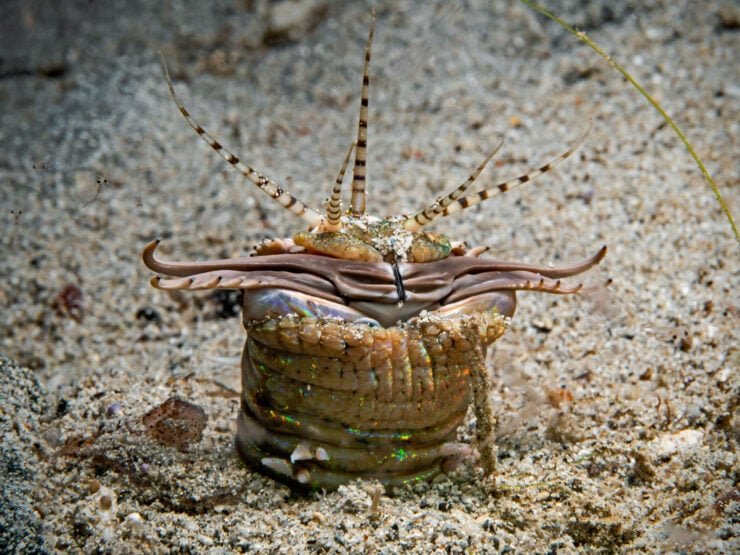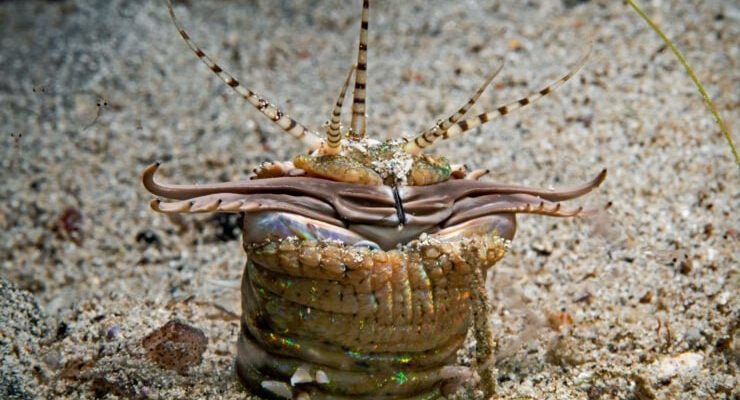
Bobbit worms, known for their impressive size and impressive hunting abilities, have a curious partnership with macroalgae. This interaction isn’t just interesting; it’s essential for understanding the health and balance of marine environments. If you’re new to the topic, don’t worry. I’m here to break it down in a way that makes sense, just like chatting with a friend over coffee. So, let’s dive into this fascinating undersea world and explore how Bobbit worms and macroalgae coexist in the sandy beds of oceans.
What Are Bobbit Worms?
Bobbit worms, scientifically known as *Eunice aphroditois*, are fascinating marine creatures that can grow several feet long. They’re named after the infamous “Bobbit” case, where their violent hunting behavior is likened to the shocking nature of that event. These worms can remain hidden in the sand, waiting patiently for unsuspecting prey like fish or crustaceans to come too close. Their strategy is simple yet effective—they strike with lightning speed, capturing their meal and dragging it into their sandy lair.
These worms have long, segmented bodies and can change their color based on their environment. Think of them as the chameleons of the ocean floor. You might be surprised to know that despite their somewhat fearsome reputation, Bobbit worms play a crucial role in their ecosystem. They help control populations of various marine life, which can keep the underwater world balanced.
What Is Macroalgae?
Now, let’s talk about macroalgae. Often mistaken for seaweed, macroalgae are large, plant-like organisms that grow in marine environments. They come in a variety of colors, shapes, and sizes—from the long strands of kelp to the delicate, leafy green varieties you might spot while snorkelling. Macroalgae aren’t just pretty; they’re essential for marine ecosystems. They provide food and habitat for many sea creatures, while also producing oxygen and absorbing carbon dioxide.
You might be wondering how macroalgae thrive in sandy beds. These plants attach themselves to rocks or other substrates, using their root-like structures to anchor in place. Think of them as the lush gardens of the ocean floor. Their presence can significantly impact the health of surrounding marine life, including Bobbit worms, which we’ll explore a bit later.
The Interaction Between Bobbit Worms and Macroalgae
Now that we know a bit about Bobbit worms and macroalgae, let’s dig into their interaction. On the sandy seafloor, the relationship between these two can be quite complex. Macroalgae can grow in abundance, which impacts the availability of nutrients in the sand. For Bobbit worms, this means they have to compete with macroalgae for resources, particularly when it comes to the detritus—tiny organic particles that serve as food.
Here’s where it gets interesting: when macroalgae flourish, they can actually create a healthier environment for Bobbit worms. The dense growth of algae can improve water quality by reducing excess nutrients, leading to a more balanced ecosystem overall. However, if macroalgae grow out of control, it might create competition for space and nutrients, making it harder for Bobbit worms to thrive.
The Role of Sandbeds in Their Relationship
Sandbeds are like the foundation of a house for these species—a crucial space where both can live and interact. Sand is not just a simple substrate; it’s a dynamic environment loaded with microorganisms and nutrients essential for life. When macroalgae grow in sandbeds, they contribute to the overall health of the sand, allowing it to nurture various life forms, including Bobbit worms.
This sandy habitat offers Bobbit worms a perfect place to burrow and hunt. The soft texture allows them to hide from predators while staying close to their food sources. However, as macroalgae expand, they can cover the sandbeds, making it harder for Bobbit worms to find their way around. So, it’s a bit like having a friendly neighbor—good for the community, but sometimes tricky when it comes to personal space.
Impacts on Marine Ecosystems
The interactions between Bobbit worms and macroalgae in sandbeds are vital not only for these species but also for entire marine ecosystems. When balance is maintained, these organisms contribute positively to the health of their environment, but when one thrives at the expense of the other, it can lead to problems.
For example, if Bobbit worms decrease in number due to unfavorable conditions caused by excessive macroalgal growth, the prey populations may explode. This imbalance can affect other marine life, leading to a domino effect throughout the ecosystem. Maintaining a healthy balance between Bobbit worms and macroalgae helps ensure that the sandy beds remain vibrant, supporting a wide range of marine creatures.
Why Should We Care?
You might be wondering why this all matters. Understanding the relationship between Bobbit worms and macroalgae can help us recognize the broader impacts on marine health. With issues like climate change and pollution threatening oceans around the world, keeping tabs on these interactions can provide valuable insights into how to protect marine ecosystems.
By studying these fascinating relationships, scientists can develop strategies that promote the health of sandy habitats. Through preservation efforts, we can ensure that the balance between Bobbit worms and macroalgae is maintained, ultimately protecting the vibrant underwater world we all enjoy.
Exploring Further: Research and Conservation
If you’re curious about diving deeper into the world of Bobbit worms and macroalgae, there are many avenues for exploration. Scientists conduct ongoing research to understand how changes in temperature, water quality, and human activity impact these organisms. By staying informed and supporting conservation efforts, we can help protect these unique ecosystems.
Joining local marine conservation groups or participating in beach clean-ups can also make a difference. Every little effort helps contribute to the health of our oceans. Plus, it’s a great way to connect with others who share your passion for marine life.
As we wrap up, the relationship between Bobbit worms and macroalgae in sandbeds is a microcosm of larger ocean dynamics. It shows how interconnected all species are and how essential it is to maintain balance in nature. So, the next time you find yourself on the beach, take a moment to appreciate the hidden world beneath your feet. It’s alive with stories waiting to be uncovered!

